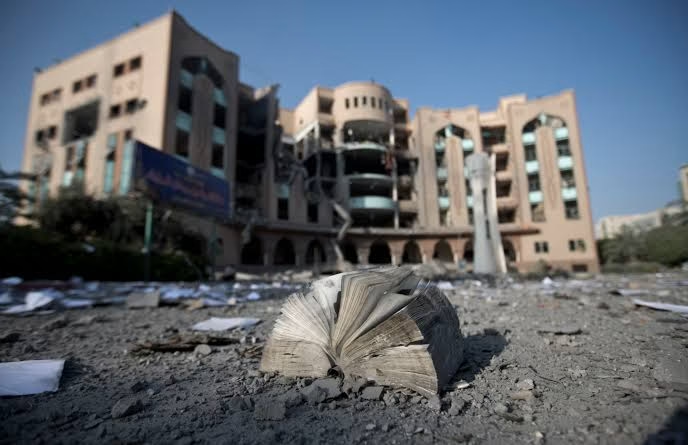
The recent ceasefire in Gaza, formalized at the October 2025 peace summit in Sharm El-Sheikh, Egypt, has brought a moment of respite and a critical opportunity to assess the path forward for its beleaguered population. While the immediate focus remains on humanitarian aid and restoring basic services, the long-term impact on vital sectors like science, technology, education, and industry will determine Gaza's resilience and future prosperity. This cessation of hostilities offers a fragile hope for reconstruction and a return to some semblance of normal life, allowing for a renewed focus on development.
The Destruction of Education in Gaza
The education sector in Gaza has faced catastrophic damage. Key universities, which are the pillars of higher education, have been systematically targeted or severely damaged. Institutions such as the Islamic University of Gaza, Al-Azhar University in Gaza, Al-Aqsa University, and Israa University have been hit, with reports indicating that nearly all university buildings have suffered severe damage or total destruction.
For example, the Islamic University of Gaza and Al-Azhar University were subjected to extensive bombing and destruction, while Israa University was reportedly used as a military facility before being demolished in a controlled explosion. This widespread destruction of the knowledge infrastructure—including schools, libraries, and the killing of numerous academics—has severely impacted the future of Gaza's students, many of whom have been out of school for two years.
With the ceasefire, efforts must urgently pivot towards rebuilding these facilities. Consistent peace is the single most critical factor for the psychological well-being of students and educators, and for allowing a stable learning environment to resume. International support for curriculum reconstruction, scholarships, and access to modern educational tools will be essential.
Potential for Science and Technology
Gaza's scientific and technological infrastructure has been crippled by years of conflict and restrictions on imports. Research institutions struggled with limited access to modern equipment, international collaborations, and consistent power. The sustained peace promised by the Egypt initiative could finally allow the entry of essential scientific instruments and components. This is crucial for reviving research into sustainable agriculture, water purification technologies, and renewable energy—all vital for Gaza's self-sufficiency. Revitalized international partnerships and consistent funding for scientific projects are now plausible, creating a pathway for a new generation of researchers to reconnect with the global scientific community.
Rebuilding Industry and Economy in Gaza
The industrial sector has been devastated, with factories, workshops, and agricultural lands suffering extensive damage. The economic hardship and widespread unemployment are staggering. The ceasefire, supported by the Sharm El-Sheikh declaration, presents a vital opportunity for industrial recovery. The agreement's focus on a "surge of humanitarian aid and reconstruction of essential infrastructure" must translate into the unimpeded flow of construction materials, machinery, and raw goods.
Furthermore, facilitating the export of goods from Gaza could inject much-needed capital into the local economy. This stability is the necessary precondition for attracting international investment and supporting local enterprises to create jobs and foster sustainable industrial development.
The Gaza Peace Deal and Its Challenges
The current peace plan, championed by President Donald Trump and co-chaired with Egyptian President Abdel Fattah el-Sisi, represents a significant and sincere effort to break the cycle of violence. The initiative, particularly its success in brokering a ceasefire and securing the release of hostages, has been a major diplomatic achievement, aiming to provide a pathway toward enduring peace and prosperity in the region.
However, the path to a durable peace remains deeply troubled by the actions of others. The policies of the Israeli government and the conduct of the Israel Defense Forces (IDF) have historically created an environment of instability that makes reconstruction incredibly challenging. The enforcement of blockades, the extensive destruction of civilian infrastructure—including the systematic targeting of educational and cultural sites—and the overall environment created by a prolonged military presence have severely damaged the trust and stability required for a thriving society. For the current peace effort to succeed, there must be a fundamental change in the approach to governance and security in Gaza, ensuring that the Palestinian people are finally given the full opportunity to rebuild their institutions and economy without fear of relapse into conflict.
Conclusion
The October 2025 ceasefire, ushered in by the Sharm El-Sheikh summit, offers a critical, but precarious, window for Gaza's recovery. Sustained peace is the fundamental prerequisite for any meaningful progress in science, technology, education, and industry. The international community must now focus on concrete action to support Gaza's human capital and infrastructure, ensuring that this moment of hope is not lost to future hostilities.